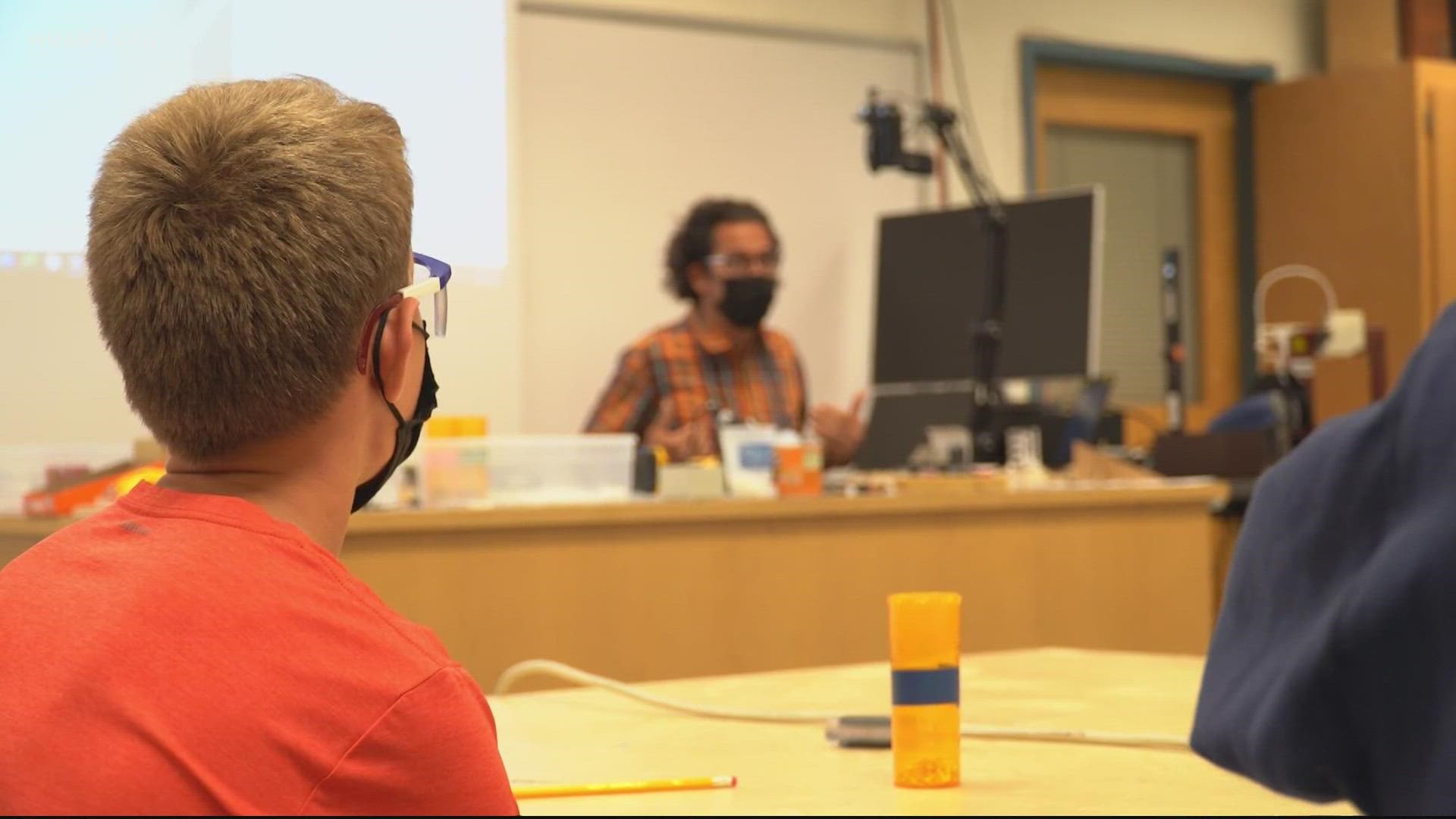VIRGINIA, USA — Test scores have dipped significantly in the pandemic, according to recently released data from the Virginia Department of Education, which released the federally-required Standards of Learning test results this week.
Pass rates in the 2020-2021 school year for students in the commonwealth were just 69% for reading, 54% for mathematics, and 59% for science.
In the last year students were tested, the 2018-2019 school year, the pass rates for all students were 78% for reading, 82% for math and 81% for science.
"Not fine. In fact, it's devastating," said children's advocate Jo-Anne Sears, blasting the Fairfax school board over the huge drop in scores in Virginia's largest school district. "You have failed our families and our nation," she said.
The low scores followed the trend of state tests nationwide, according to the department. Virginia students took the tests within the 2021 school year and all were required to take them in school buildings to maintain testing security protocols. The state's SOL testing in 2019-2020 was canceled, rendering the 2021 SOL tests as the first state assessments administered in two years.
The percentage of general participation was also lacking; in tested grades in 2021, 75.5% of students took the reading assessment, 78.7% took math, and 80% took science.
“As expected, the results of Virginia’s 2020-2021 Standards of Learning tests taken by students reflect the extraordinary circumstances faced by students and schools last year, and establish a baseline for recovery from the pandemic,” the department stated in their press release regarding the scores.
Many parents blamed virtual learning. "He struggled sitting in front of a computer all day long," said Kim Putens, a Fairfax mom, about her normally straight-A student, in the midst of the pandemic.
In a typical school year, participation in federally required tests is usually around 99%. However, the department stated that, since last year was not a normal school year for students and teachers, making comparisons with prior years would be inappropriate.
The department went on to assess that pass rates reflect the disruptions to instruction, decreased participation in state assessment programs, pandemic-related declines in enrollment and fewer testing retakes, which typically account for an up to 5% increase in school pass rates following first attempts.
The results reflected disproportionate nationwide impacts across all student groups, according to the state department, especially African American students, Hispanic students, economically disadvantaged students, students with disabilities and English learners.
“Virginia’s 2020-2021 SOL test scores tell us what we already knew—students need to be in the classroom without disruption to learn effectively,” Superintendent of Public Instruction James Lane stated via press release. “The connections, structures, and supports our school communities provide are irreplaceable, and many students did not have access to in person instruction for the full academic year. We must now focus on unfinished learning and acceleration to mitigate the impact the pandemic has had on student results.”
The test results are one of many tools that routinely give staff information on where students are excelling and where they are struggling. The results then aid in designing instruction and support that meets the students' unique academic needs, the department explained.
“Recovery efforts are supported by an infusion of state and federal funding for the commonwealth’s public schools,” the department goes on to detail, stating that, in May, Gov. Ralph Northam announced $62.7 million in Virginia LEARNS Education Recovery grants to help school districts “expand and implement targeted initiatives to address the impact of the coronavirus pandemic on student learning.”
Virginia LEARNS grants include funds to address unfinished learning through increased in-person instruction and small-group learning; extended instruction, strategic virtual learning, technology and staff training; social-emotional, behavioral and mental health supports for students and staff, student-progress monitoring and the implementation of year-round or extended-year calendars, according to the department.
“Additionally, $147 million from the federal American Rescue Plan’s Elementary and Secondary School Emergency Relief Fund are required to be used by the commonwealth to support instructional recovery efforts. The funding includes $105 million to address unfinished learning, $21 million for evidence-based afterschool programs, and $21 million for evidence-based summer learning,” the department confirmed that more details on the specific uses of the dedicated funds are forthcoming.

